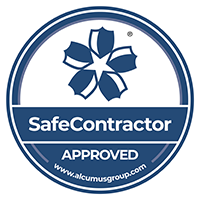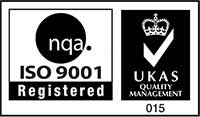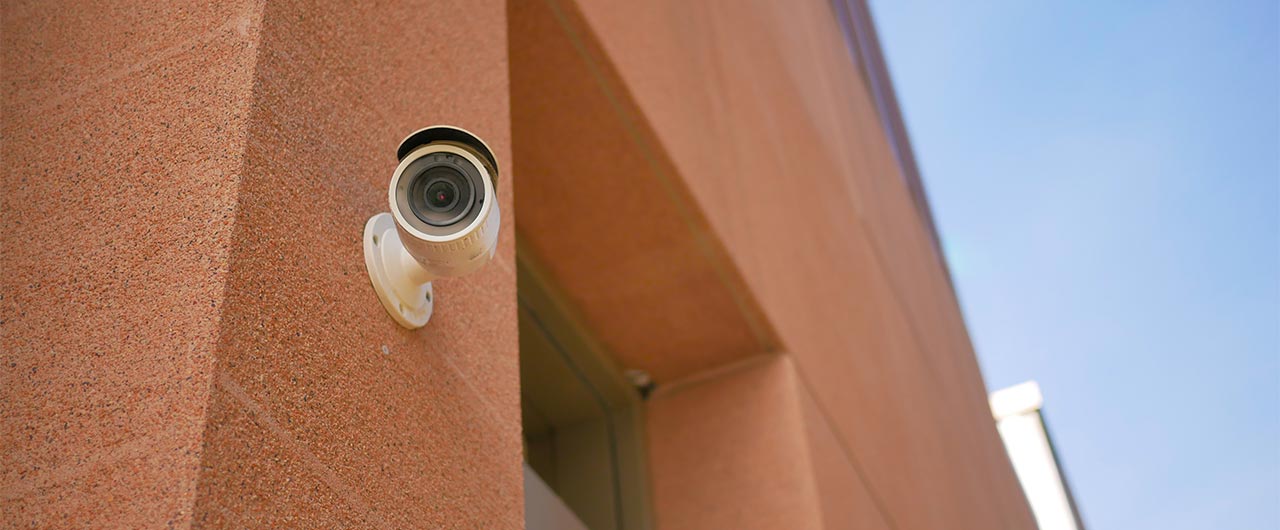It is practically impossible to put a price on the importance of ensuring the safest and most secure possible environment for schoolchildren.
After all, schools and colleges are meant to be places where youngsters learn and grow. If a child ever feels unsafe during their time at school, this is likely to hamper their development and may prevent them from thriving, both personally and academically.
The statistics tell their own saddening story about the risks that students, staff, and visitors alike all too often experience when they are at a school premises. It was reported earlier this year, for example, that only two in five children in England said they always felt safe at school.
Furthermore, teachers have spoken of increasing levels of violence and abuse aimed at both school personnel and other students, as well as expressions of sexism, racism, and homophobia.
Another recent survey uncovered similar findings, with almost one in 10 (8%) of pupils reporting not feeling safe at school.
How can a school CCTV system combat risks like these?
Of course, even the most sophisticated and reliable closed-circuit television (CCTV) systems cannot be treated as a “catch-all” solution for any concerns about safety and security in a school.
If, however, you invest in the right CCTV video surveillance systems for your educational establishment’s premises, you can help pupils, teachers, and other people on the site feel more “at ease” as they go about their day.
Those systems can take many different forms, ranging from classroom-based CCTV cameras and surveillance cameras monitoring the perimeter of the school premises, right through to Automatic Number Plate Recognition (ANPR) cameras at the school gates.
To help you narrow down the possibilities for CCTV systems at your school or college site, we have explained many of the most frequently used and relevant solutions below.
Is it legal to have CCTV in a school?
Yes, it is legally permissible to have CCTV in a school in the UK, but the school must have a “lawful basis” to have such a system in place, in accordance with the UK General Data Protection Regulation (GDPR).
It is justifiable to use CCTV in a school if the intention of doing so is to maintain the safety of pupils, other members of the school community, and people who have a legitimate reason to be at the school site. The use of CCTV surveillance is also acceptable for the protection of school buildings and facilities.
If, however, you do proceed to use CCTV at your school premises, you will need to follow the guidelines set out by the Information Commissioner’s Office (ICO). These guidelines stipulate that you must only use CCTV when necessary. It is also essential to inform people that they are being recorded, and to ensure the footage is stored securely.
You should make sure signage is displayed in the cameras’ vicinity, preferably in a prominent location close to the school entrance(s). The information on the signage should let people know that the cameras are in operation, and set out the purposes for the cameras. Information should also be stated about the organisation operating the CCTV system, with contact details.
- CCTV systems for the classroom
Classrooms, of course, are where much of the “magic” happens in schools. Many of us will have childhood memories of memorable lessons and teachers who were there for us, helping us to achieve things we might not have thought possible.
Sadly, however, there continue to be far too many news reports about high and/or increasing levels of classroom violence. You might have seen this report, for example, including the teachers’ union NASUWT’s statement that about four in 10 (38%) teachers in Wales had experienced violence or physical abuse from a pupil during the previous 12 months.
Tackling risks like this is a relatively obvious, but nonetheless vital, reason to consider installing CCTV cameras in classrooms. A given student who has a tendency towards anger and violence may be deterred from abusing a teacher if they know CCTV cameras are monitoring them and could be used to immediately identify them.
Classroom CCTV systems can also be invaluable for keeping an eye on lower-level misbehaviour or disruption that could escalate. All in all, they could greatly contribute to protecting teachers and pupils from a range of threats.
- Dome cameras for corridors
It might seem that the dome-shaped glass enclosure on this type of camera would make it instantly recognisable to a would-be intruder or misbehaving pupil. In reality, however, the discreet appearance of these cameras is one of the best reasons to invest in them for a school.
So, even if someone being watched with a dome camera actually notices the camera, it probably won’t be obvious to them whether they are being recorded. These cameras are also designed to be tamper-proof, with the dome providing a shield against vandalism and even adverse weather conditions.
It should be no great surprise, then, that dome cameras are often used for the monitoring of such spaces as corridors, entrances, and exits within a school. Their ability to provide a 360-degree view of the area in which they are installed, together with the high-quality footage they can provide even in suboptimal conditions, can help make them even more useful.
Corridors are key “transitional” areas at a school premises, where problematic activities – such as antisocial behaviour, stealing, or even drug-dealing – can occur away from the gaze of a teacher or headmaster. So, positioning dome cameras in these spaces can greatly help to detect risks that might otherwise be easily missed.
- PTZ cameras for external areas
School premises, of course, don’t only consist of internal spaces like classrooms and corridors. That’s because the likes of playgrounds, car parks, and the area surrounding the entrance to a school, can also present safety and security risks.
Furthermore, with these areas often being crowded at the times when issues arise, it might not be quick or easy for even an on-site security operative to identify perpetrators.
This is where pan-tilt-zoom (PTZ) cameras can demonstrate their worth. These cameras incorporate mechanical parts that enable them to zoom in and out of a scene, in addition to tilting up and down and swivelling left to right. On-site or off-site security personnel can operate these cameras via a remote controller.
So, in a classic situation at a school site where safety and security risks can occur – for example, if a fight starts – the security operative can take a closer look at the situation on the other side of the camera.
PTZ cameras can even be programmed to automatically follow motion-triggered activity. This helps make them greatly useful as part of a wider security system, the PTZ cameras tracking movement while a fixed camera captures detailed shots.
Should CCTV cameras be installed in schools?
If you are the relevant decision-maker for a school, it will ultimately be up to you whether you have CCTV systems installed at your educational establishment’s premises.
However, it is certainly permitted to have CCTV surveillance systems installed on a school site, as long as the guidelines of the ICO are followed.
Having the right CCTV systems fitted around your school premises can bring a variety of advantages, such as:
- Their deterrence of criminal and antisocial acts, ranging from break-ins and theft to vandalism
- Their identification of perpetrators, so that they can be suitably punished
- Their monitoring of students, including those who may be engaging in antisocial behaviour or truanting
- Their monitoring of incidents between teachers and pupils, so that it can be objectively determined what actually happened in a particular incident
- Their detection of emerging problems and risks, so that security personnel can intervene at the earliest possible stage
- Their remote monitoring capabilities; security operatives don’t always need to be on the actual school premises to view CCTV footage and take the subsequent actions that may be necessary to restore safety and security.
In summary, CCTV can bring many benefits to schools in the UK, being instrumental in achieving the highest levels of security and safety for students, staff, and visitors. However, it is also of the utmost importance that CCTV systems are used in a legally compliant and responsible manner.
For an in-depth conversation about your school or college’s CCTV requirements in London, Surrey, or Kent, and to receive a free CCTV installation quote, please call 0208 090 7485 today.
- ANPR cameras for the school gates
Cameras that incorporate Automatic Number Plate Recognition (ANPR) technology are able to “read” the licence plate of a vehicle, and immediately check this against a database record of vehicles of interest. Such cameras are used by the UK police as part of their efforts to detect, deter, and disrupt criminal activity up and down the country.
The relevance of ANPR cameras at a school premises might not seem immediately obvious. However, these cameras can be an excellent solution for controlling access to the school gates.
ANPR cameras at a school operate as follows: the number plates of vehicles going into and leaving the school site are checked and compared to a database of authorised vehicles. If a given vehicle is not “authorised” according to its licence plate, the ANPR camera denies access.
- Surveillance cameras for the perimeter of the school site
The gates and fences around your school site can be particularly vulnerable areas as far as the safety and security of the premises is concerned. After all, many schools can cover quite a substantial area, and there can be many “weak points” through which intruders and thieves could get onto the main school site.
Fortunately, here at DTS London, we can install CCTV systems at your school that are perfectly suited to monitoring the perimeter of the site.
All our surveillance systems incorporate infrared (IR) night vision. These means our cameras are able to detect motion even in poor light conditions. Furthermore, they can take clear images and alert security staff in the event of an unauthorised individual gaining access to the premises or otherwise acting suspiciously.
- Covert CCTV cameras for any of a range of discreet locations
To a minority of pupils, it might seem that the school wouldn’t notice if an item of science equipment or a tablet computer was to mysteriously “go missing”.
But of course, schools do notice such events over time, not least in terms of the impact on always under-pressure school finances. Unfortunately, though, your school might not have the right surveillance measures in place to catch the culprit in the act.
So, you may take the opportunity to position a few covert surveillance cameras in inconspicuous parts of your school buildings, such as inside light fixtures or on bookshelves. These barely noticeable CCTV systems could help capture footage of perpetrators in areas of your premises where theft or vandalism is a recurrent problem.
- Anti-ligature cameras to guard against the risk of suicide
There can unfortunately be a risk of suicide and self-harm on school premises. Anti-ligature cameras can help lower this risk in such areas as bathrooms and stairwells. They are designed to resist tampering, and to deter any efforts by individuals to reach or attach to the camera.
Anti-ligature cameras can also be greatly useful for the monitoring of at-risk individuals, so that if a potential threat arises, security staff can be alerted.
Discover the right solution for your school premises in London, Surrey, or Kent
Hopefully, the above guide will have helped give you a strong sense of the possibilities when you are looking to invest in the CCTV video surveillance solutions that best suit your school site.
New CCTV solutions are continually becoming available, so we can draw upon these to devise the most appropriate arrangement for your school premises.
To request your free CCTV installation quote from our team at DTS London today, please call 0208 090 7485; you are also welcome to make an enquiry online.






